September 11, 2025

The article titled "6 Key Overcorrection ABA Techniques for Effective Learning" serves as a crucial resource for understanding essential overcorrection techniques in Applied Behavior Analysis (ABA) that significantly enhance learning outcomes. It meticulously outlines various strategies, including:
These methods, when effectively implemented, not only improve educational results but also foster independence in learners. Are you aware of how these techniques can transform your approach to education? Delve into this article to discover the powerful impact of overcorrection techniques in ABA and elevate your learning strategies.
In the evolving landscape of Applied Behavior Analysis (ABA) therapy, the significance of effective learning techniques is paramount. With the surging demand for skilled Board Certified Behavior Analysts (BCBAs), mastering key overcorrection methods is essential for enhancing therapeutic outcomes. This article explores six pivotal overcorrection ABA techniques that refine error correction and empower practitioners to foster independence and skill mastery in their clients.
How can these strategies transform the learning experience and drive meaningful change in behavior? The exploration of these techniques promises to unveil the answers, providing invaluable insights for both professionals and caregivers alike.
The demand for Board Certified Behavior Analysts (BCBAs) is projected to grow by an impressive 25% by 2026. In this rapidly expanding field of Applied Behavior Analysis (ABA) therapy, Hire ABA stands out as a specialized recruitment platform dedicated to connecting BCBAs with premier job opportunities. By streamlining the hiring process through personalized resume assessments that evaluate candidates' experiences and career goals, Hire ABA ensures qualified professionals find roles that align with their expertise and aspirations.
Have you faced challenges in hiring the right talent? Our team employs advanced job fit scoring to identify opportunities that match candidates' skills, preferences, and desired locations. This alignment is not merely beneficial; research indicates that practitioners who are well-matched to their positions are significantly more likely to implement strategies such as [overcorrection aba](http://hireaba.today/blog-posts/10-essential-aba-jobs-for-board-certified-behavior-analysts) effectively, leading to .
As organizations increasingly recognize the value of tailored job matching, leveraging platforms like Hire ABA enhances recruitment efficiency for healthcare employers and mitigates the issues related to overcorrection aba in the overall effectiveness of ABA practices across diverse settings. The potential for positive impacts on therapy outcomes becomes even more pronounced when the right candidates are placed in the right roles. Don't miss the opportunity to connect with top talent in ABA therapy—choose Hire ABA for your recruitment needs today.
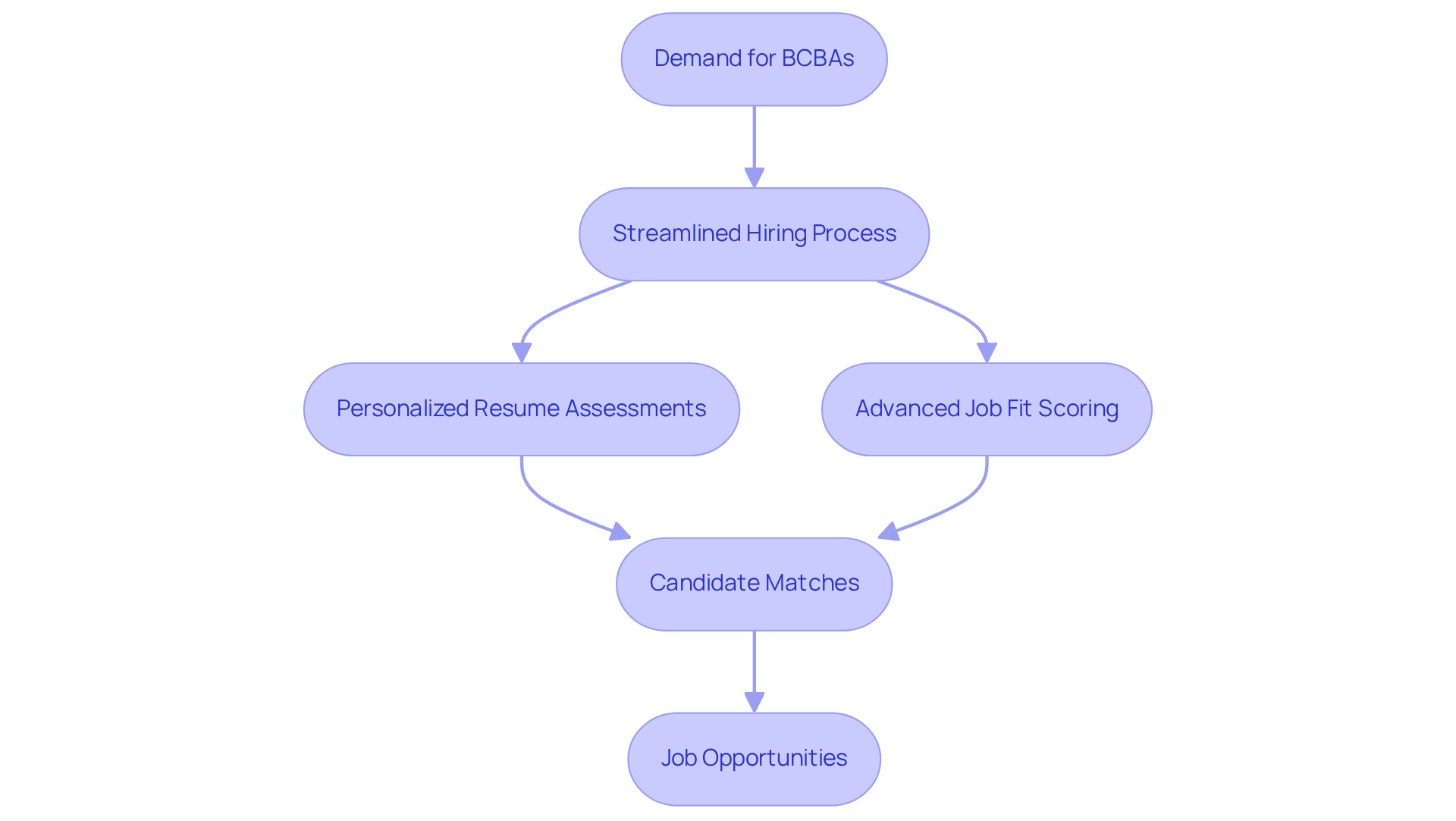
Error correction is a crucial aspect of overcorrection ABA, vital for identifying and rectifying mistakes made by students. This process encompasses several critical steps:
Board Certified Behavior Analysts (BCBAs) emphasize that effective error correction, including overcorrection ABA, not only clarifies misunderstandings but also reinforces appropriate actions, ultimately enhancing learning outcomes. As B.F. Skinner noted, "A person who has been punished is not thereby simply less inclined to behave in a given way; at best, he learns how to avoid punishment." This perspective underscores the importance of , such as overcorrection ABA, in fostering a supportive learning atmosphere that promotes skill mastery and personal development.
In learning environments, effective methods for correcting errors may include overcorrection ABA, along with:
These techniques align with Skinner's principles, which highlight the significance of observable actions and the environmental factors influencing learning. Skinner's work illustrates that the primary distinction between rats and humans is that rats learn from experience, reinforcing the necessity for practical application in educational settings. By focusing on these approaches, educators can create an environment conducive to learning, where errors are viewed as opportunities for improvement rather than obstacles.
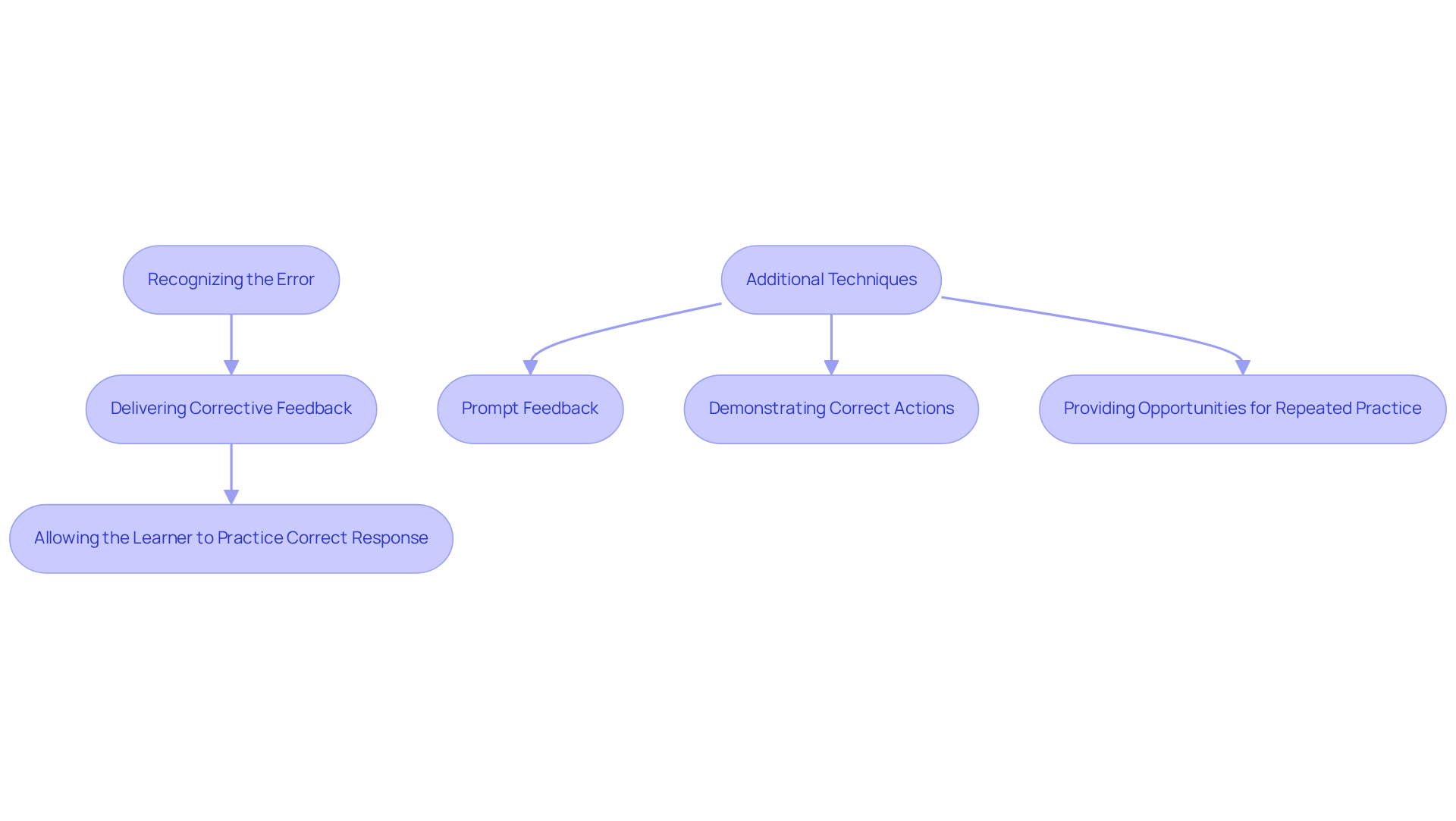
Reinforcement approaches are pivotal in ABA therapy, as they foster the repetition of desired actions through positive feedback. These methods encompass various types of reinforcement, including verbal praise, tangible rewards, and other incentives that effectively motivate students. Research underscores that immediate and contingent reinforcement produces optimal results, particularly when aligned with the individual’s interests. Remarkably, 90% of individuals demonstrate significant progress when the recommended hours are fully implemented alongside active caregiver participation. This highlights the critical role of caregiver involvement in the reinforcement process.
By consistently applying these approaches, practitioners cultivate an environment where students feel valued and motivated to engage in positive behaviors. Tailoring reinforcement to align with individual preferences greatly enhances its effectiveness, ensuring that rewards resonate with learners and encourage sustained engagement. For example, the case study titled 'Combining Reinforcers for Effectiveness' illustrates how customizing rewards fosters a more engaging therapeutic environment, ultimately leading to improved behavioral outcomes.
Moreover, the significance of positive feedback in ABA learning cannot be overstated; as noted, 'Immediate and contingent reinforcement tends to yield the best results, particularly when aligning rewards with the activities or items the individual values most.' However, it is crucial to consider potential drawbacks of positive reinforcement, such as an overcorrection aba that leads to an over-reliance on external rewards and the diminishing effectiveness of reinforcers over time. To optimize practical application, healthcare employers should routinely , ensuring that strategies remain effective and relevant in their practices.
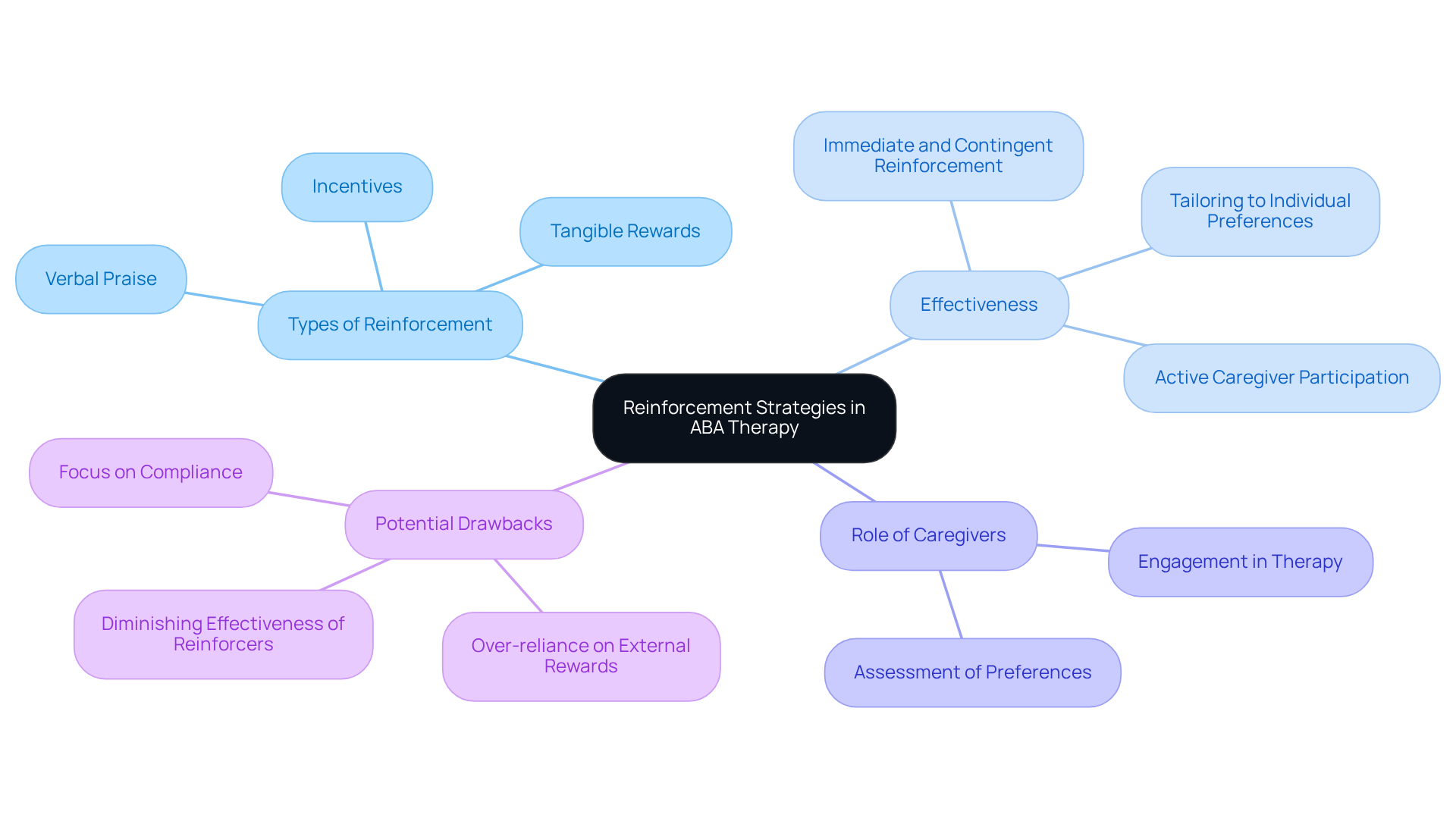
Functional Behavior Assessment (FBA) serves as a systematic approach designed to uncover the underlying causes of specific behaviors. By gathering data through direct observations, structured interviews, and assessments, practitioners can pinpoint the function of a behavior—whether it seeks attention, aims to escape a task, desires access to tangible items, or is fueled by sensory stimulation. This comprehensive understanding is essential for formulating that address the root causes of behaviors rather than simply managing their symptoms.
Research indicates that effective FBAs lead to highly personalized intervention plans (BIPs), significantly enhancing therapy outcomes and enriching the overall learning experience for individuals engaged in Applied Behavior Analysis (ABA) therapy. For instance, an evaluation of a 9-year-old boy's tantrums during thunderstorms revealed that these behaviors were manifestations of his fear. By tackling this underlying issue and teaching the child to articulate his needs verbally, parents fostered a more supportive environment, illustrating the profound impact of customized interventions grounded in FBA findings.
Moreover, the Individuals with Disabilities Education Act (IDEA) mandates that schools conduct FBAs when a student with a disability is removed from their educational setting for over 10 consecutive days, underscoring the legal imperative of these assessments. The importance of FBAs within the framework of overcorrection aba cannot be overstated, as they not only inform intervention plans but also facilitate enduring positive changes in behavior.

Prompting techniques represent essential strategies within ABA therapy, designed to guide individuals toward desired behaviors and responses. These techniques include a variety of methods such as:
All tailored to meet the unique needs of each individual. The primary aim of prompting is to provide adequate support that encourages success while gradually decreasing assistance through a method known as prompt fading as the individual builds confidence and skill.
Research demonstrates that effective prompting not only enhances learning outcomes but also fosters independence, empowering individuals to apply their skills across diverse contexts without reliance on external cues. For instance, the most-to-least prompting approach begins with maximum support and transitions to less intrusive prompts, facilitating quicker mastery of skills.
Moreover, errorless learning methods aim to minimize mistakes through timely prompts, thereby boosting individuals' confidence and comprehension by ensuring that errors are avoided to the greatest extent possible. By implementing a structured prompting hierarchy, caregivers can maintain consistency, which is vital for effective learning and skill reinforcement.
Ultimately, the deliberate application of these strategies enables individuals to achieve and success in their daily lives.
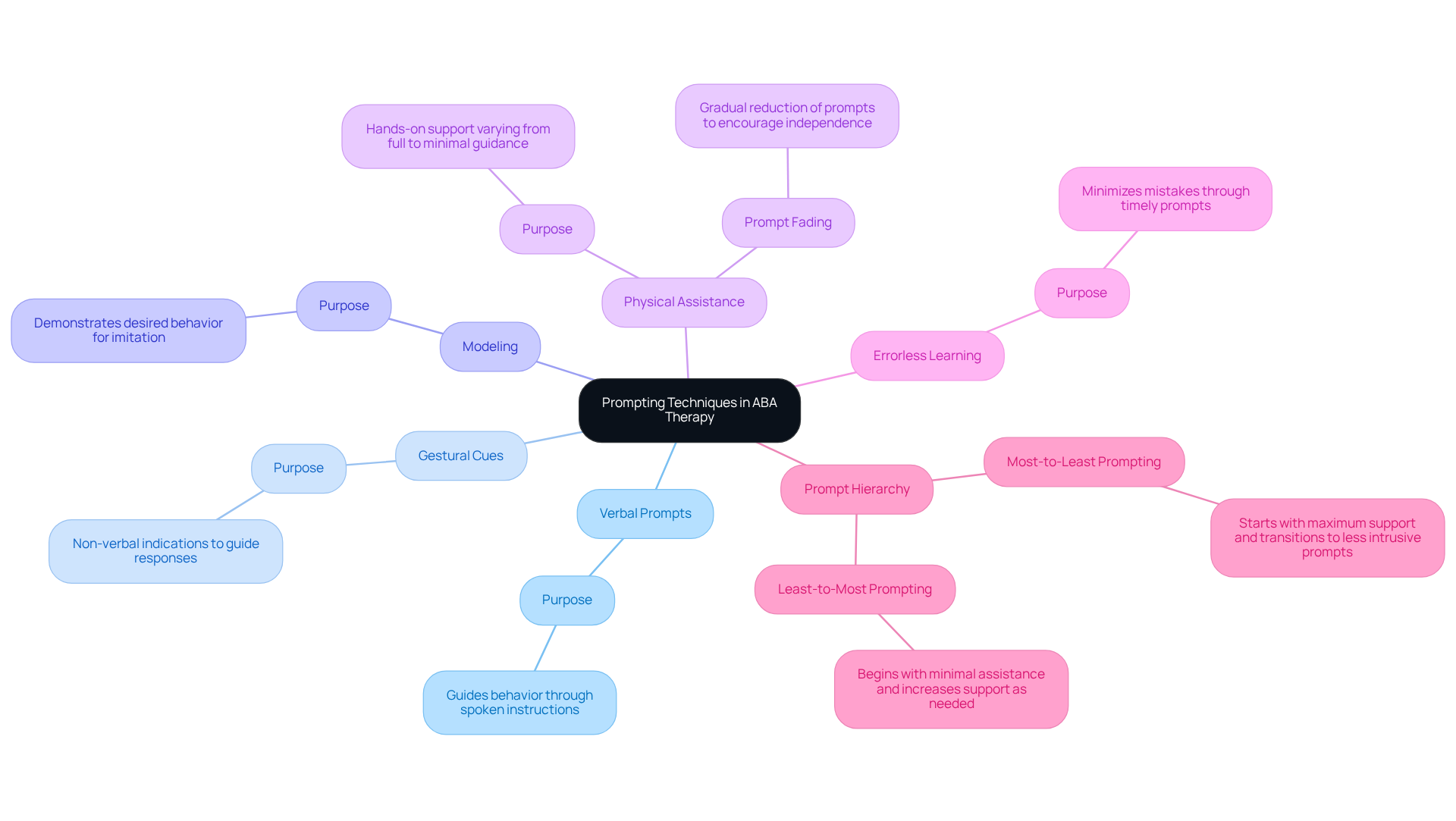
Fading techniques are pivotal in Applied Behavior Analysis (ABA), particularly in the context of overcorrection aba, as they entail the gradual reduction of support provided to individuals, thereby fostering independence and self-sufficiency. This process initiates with substantial support, such as full physical assistance, and transitions to less intrusive prompts, ultimately culminating in independent task performance. For example, a practitioner may initially implement hand-over-hand guidance, subsequently shift to verbal prompts, and finally empower the learner to execute the task autonomously.
Two essential methods in fading are the . The LTM approach commences with minimal assistance and promotes independence in established skills, whereas the MTL method starts with full prompts and aims for errorless learning.
Research underscores that effective fading strategies not only enhance skill acquisition but also significantly bolster individuals' confidence and self-esteem. By reducing prompt dependency, individuals are empowered to apply their skills in real-world contexts without ongoing support. Studies reveal that when prompts are systematically faded, learners retain skills more effectively over the long term, ensuring genuine mastery rather than reliance on external cues.
Behavior analysts assert that the ultimate goal of fading is to cultivate autonomy without leading to an overcorrection aba. One expert articulates that 'when fading in ABA is executed correctly, the individual becomes less dependent on prompts and more confident in their ability to execute tasks without assistance.' Regular data collection is indispensable during this process, as it facilitates tracking student progress and ensures the efficacy of the interventions. This gradual approach not only promotes independence but also enhances the overall learning experience, making it essential for successful outcomes in overcorrection aba.
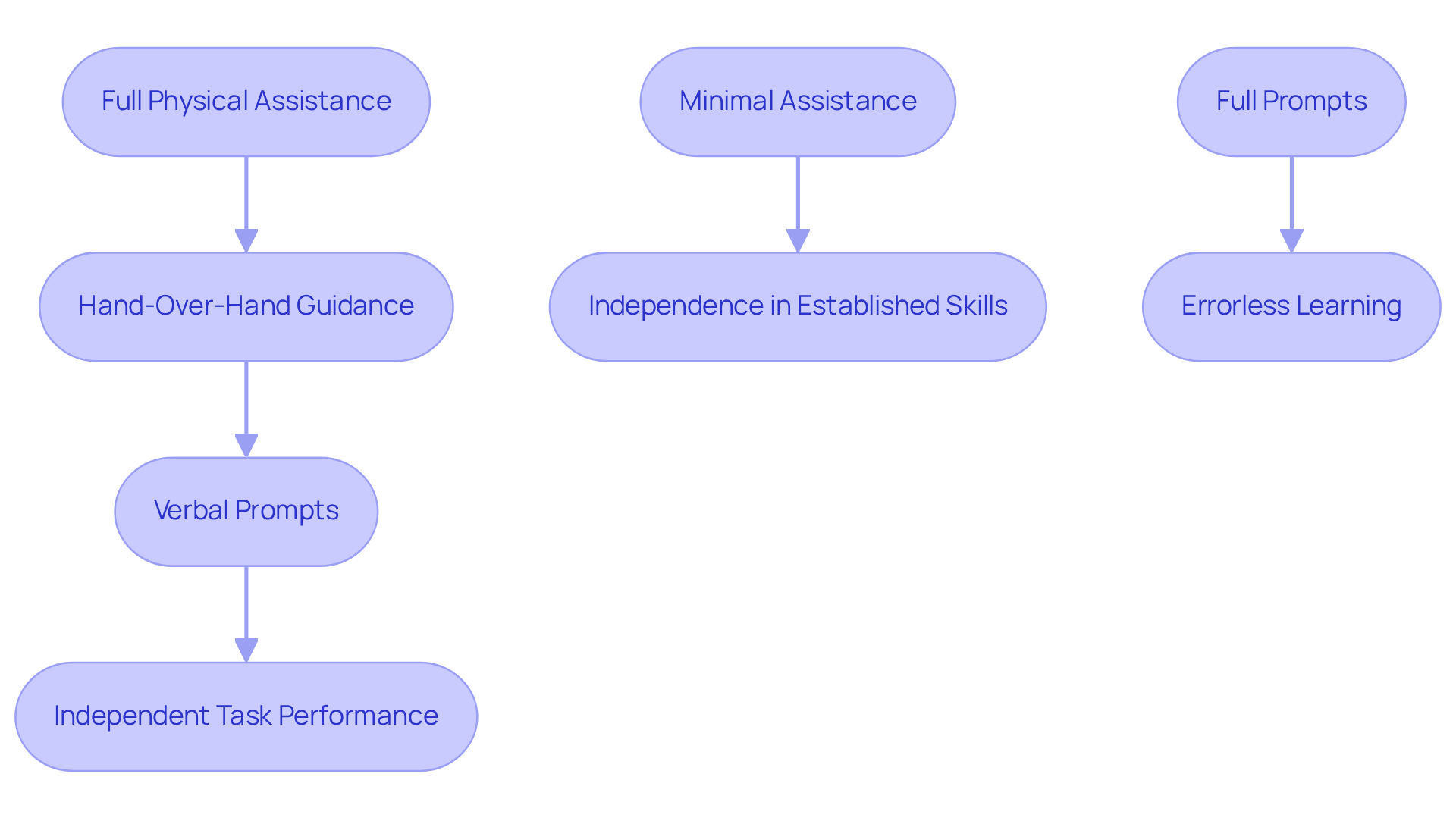
Data collection stands as a cornerstone of Applied Behavior Analysis (ABA) therapy, enabling practitioners to monitor progress, assess intervention effectiveness, and make informed decisions. Current trends in data collection methods, such as:
each provide unique insights into behavior patterns. For example, frequency recording tracks how often a behavior occurs, whereas duration recording measures how long a behavior persists, facilitating a comprehensive understanding of individual needs.
By systematically gathering and analyzing data, practitioners can identify trends and evaluate the impact of interventions, leading to timely adjustments in treatment plans. This not only enhances the effectiveness of ABA practices but also ensures that interventions are tailored to meet individual goals. As one practitioner aptly stated, "Accurate data collection helps monitor progress, spot trends, and make timely changes to therapy plans," highlighting the vital role of data in achieving successful outcomes in ABA therapy. Embracing these data-driven practices cultivates a collaborative environment among therapists, families, and caregivers, ultimately fostering better support for individuals with autism.
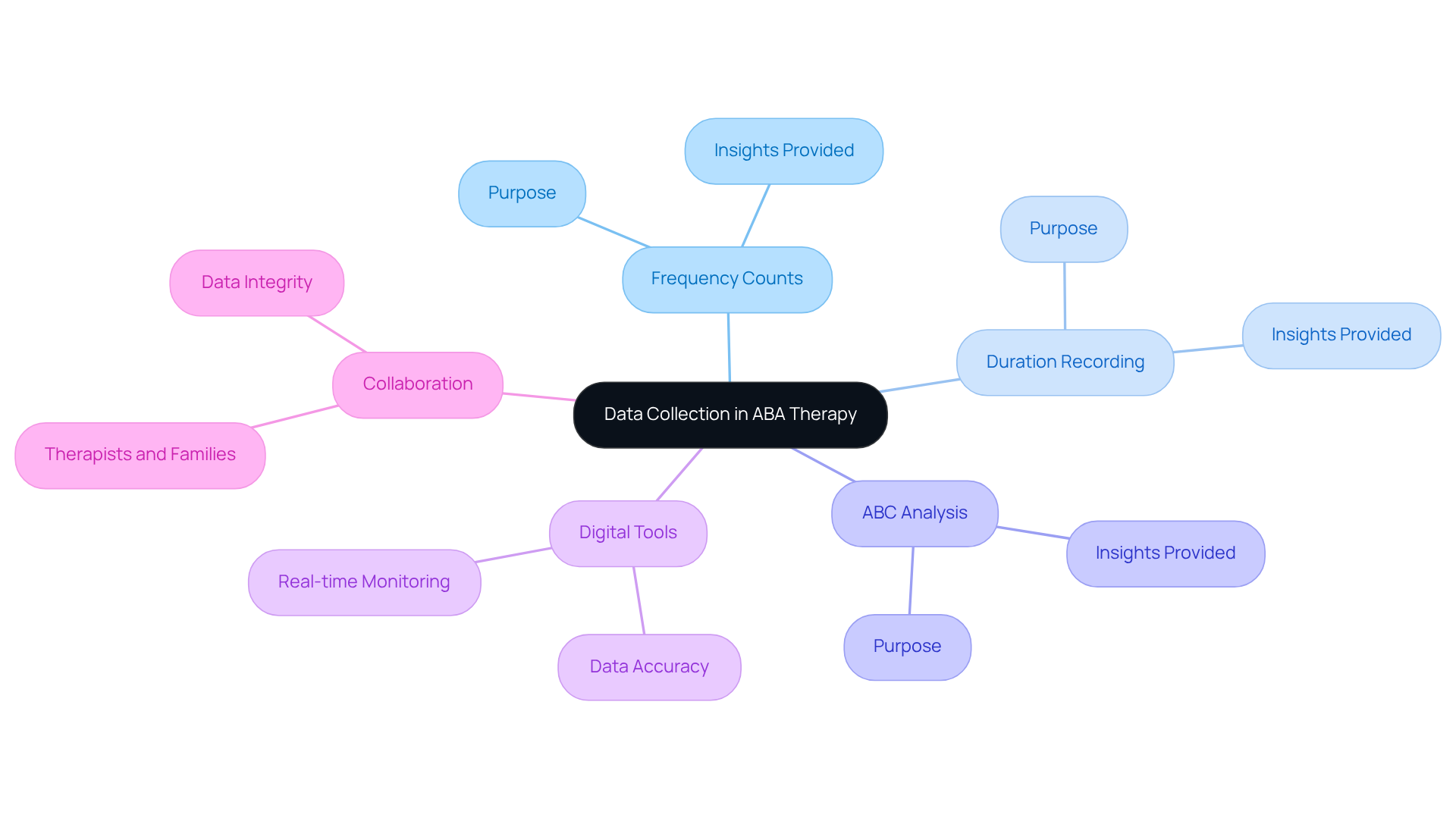
The exploration of overcorrection techniques in Applied Behavior Analysis (ABA) underscores their critical role in enhancing learning outcomes. Employing methods such as:
Practitioners can cultivate a supportive and effective learning environment. These approaches not only assist in correcting mistakes but also promote independence and skill mastery among learners.
Key arguments throughout the article highlight the significance of tailored interventions and the necessity of aligning strategies with individual needs. Effective error correction methods, such as overcorrection in ABA, serve to clarify misunderstandings and reinforce appropriate actions. Moreover, the role of data collection in driving evidence-based practices is paramount, as it facilitates informed decision-making and ongoing assessment of intervention effectiveness.
Ultimately, the insights provided emphasize the importance of implementing these overcorrection techniques to foster a more effective learning atmosphere. By prioritizing personalized approaches and leveraging data-driven practices, educators and practitioners can significantly enhance the therapeutic experience for individuals in ABA therapy. Embracing these strategies not only enriches learning but also empowers individuals to achieve greater autonomy in their daily lives, making it essential for all stakeholders in the field to advocate for their consistent application.
What is Hire ABA and its purpose?
Hire ABA is a specialized recruitment platform designed to connect Board Certified Behavior Analysts (BCBAs) with premier job opportunities in the field of Applied Behavior Analysis (ABA) therapy.
What is the projected growth for BCBAs by 2026?
The demand for Board Certified Behavior Analysts (BCBAs) is projected to grow by 25% by 2026.
How does Hire ABA streamline the hiring process?
Hire ABA streamlines the hiring process through personalized resume assessments that evaluate candidates' experiences and career goals, ensuring qualified professionals find roles that align with their expertise and aspirations.
What is job fit scoring and its significance?
Job fit scoring is an advanced method used by Hire ABA to identify job opportunities that match candidates' skills, preferences, and desired locations, which can lead to better job placement and improved outcomes for clients.
How does effective job matching impact ABA therapy outcomes?
Research indicates that practitioners who are well-matched to their positions are significantly more likely to implement effective strategies, leading to improved outcomes for clients in ABA therapy.
What is error correction in the context of ABA?
Error correction is a fundamental aspect of overcorrection ABA, which involves recognizing mistakes, delivering corrective feedback, and allowing learners to practice the correct response to enhance learning.
What are the critical steps in the error correction process?
The critical steps in the error correction process include recognizing the error, delivering corrective feedback, and allowing the learner to practice the correct response.
Why is effective error correction important in learning?
Effective error correction clarifies misunderstandings and reinforces appropriate actions, ultimately enhancing learning outcomes and fostering a supportive learning atmosphere.
What methods can be used for effective error correction?
Effective methods for correcting errors may include overcorrection ABA, prompt feedback, demonstrating correct actions, and providing opportunities for repeated practice.
How does B.F. Skinner's work relate to error correction in learning?
B.F. Skinner emphasized that learning occurs through experience and that effective error correction methods, such as overcorrection ABA, are essential in creating an environment conducive to skill mastery and personal development.
Our expert recruitment strategies and AI-driven sourcing ensure that you receive top-notch candidates quickly, without compromising on quality. Whether you’re looking for BCBAs, Clinical Directors, or RBTs, we’ve got you covered.